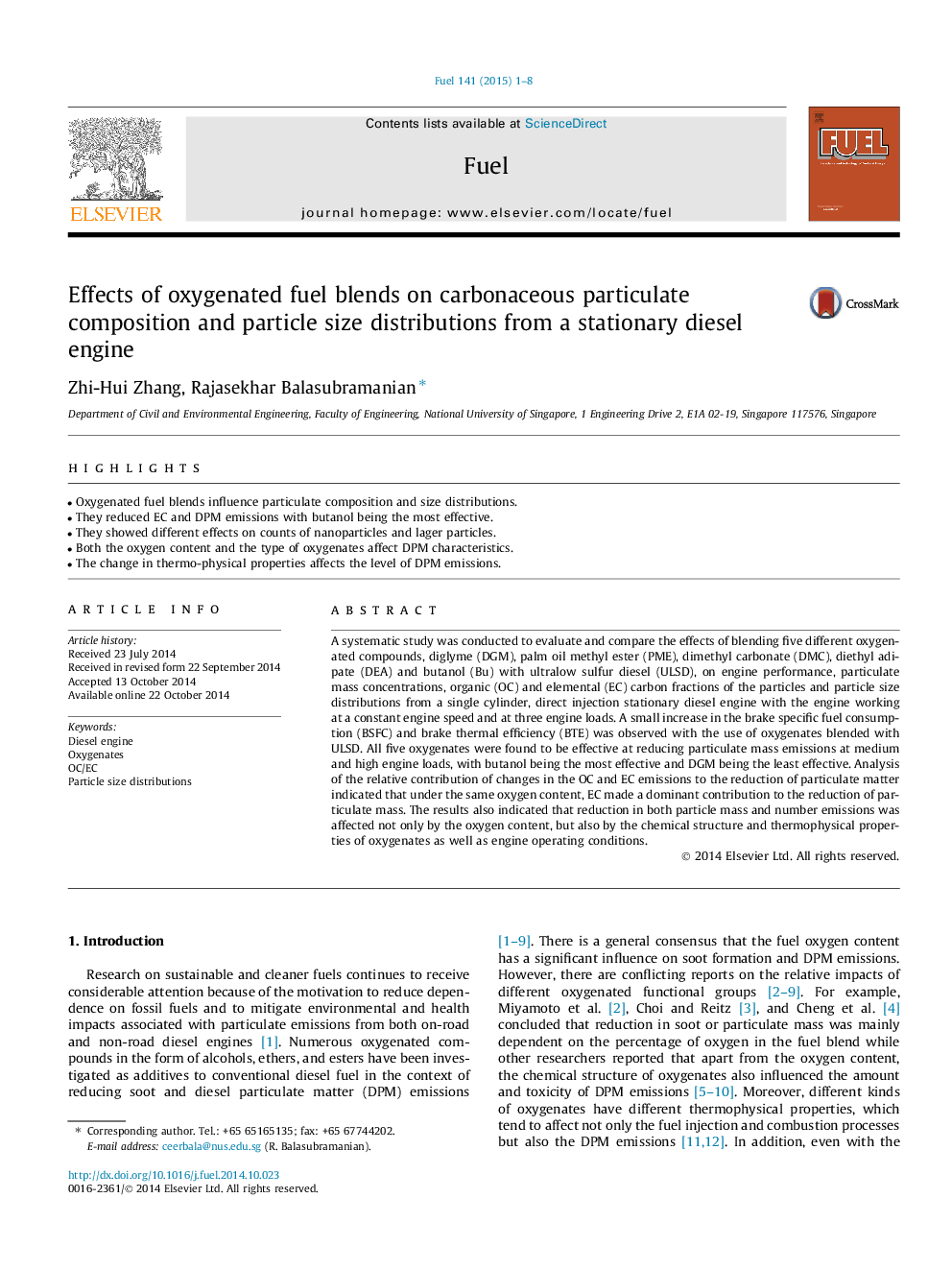| کد مقاله | کد نشریه | سال انتشار | مقاله انگلیسی | نسخه تمام متن |
|---|---|---|---|---|
| 205870 | 461127 | 2015 | 8 صفحه PDF | دانلود رایگان |
• Oxygenated fuel blends influence particulate composition and size distributions.
• They reduced EC and DPM emissions with butanol being the most effective.
• They showed different effects on counts of nanoparticles and lager particles.
• Both the oxygen content and the type of oxygenates affect DPM characteristics.
• The change in thermo-physical properties affects the level of DPM emissions.
A systematic study was conducted to evaluate and compare the effects of blending five different oxygenated compounds, diglyme (DGM), palm oil methyl ester (PME), dimethyl carbonate (DMC), diethyl adipate (DEA) and butanol (Bu) with ultralow sulfur diesel (ULSD), on engine performance, particulate mass concentrations, organic (OC) and elemental (EC) carbon fractions of the particles and particle size distributions from a single cylinder, direct injection stationary diesel engine with the engine working at a constant engine speed and at three engine loads. A small increase in the brake specific fuel consumption (BSFC) and brake thermal efficiency (BTE) was observed with the use of oxygenates blended with ULSD. All five oxygenates were found to be effective at reducing particulate mass emissions at medium and high engine loads, with butanol being the most effective and DGM being the least effective. Analysis of the relative contribution of changes in the OC and EC emissions to the reduction of particulate matter indicated that under the same oxygen content, EC made a dominant contribution to the reduction of particulate mass. The results also indicated that reduction in both particle mass and number emissions was affected not only by the oxygen content, but also by the chemical structure and thermophysical properties of oxygenates as well as engine operating conditions.
Journal: Fuel - Volume 141, 1 February 2015, Pages 1–8
